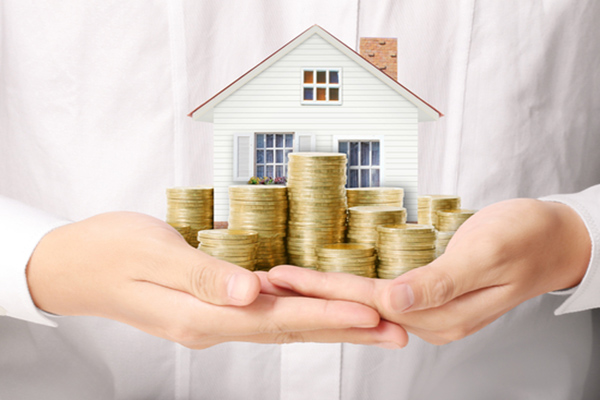What home updates add value?
Some home updates are all about making your home more comfortable for you and your family. A great example of this would be, putting in a swimming pool. It may not increase your home value by $50,000, but it will give you and your family many summer afternoons of fun. While, other home improvements are just as much about increasing your property value as they are about making your house homier.
If you’re thinking of selling in the relatively near future, you need to spend your home update budget where it counts. These 10 home updates will net you the biggest increases in property value and the highest returns on your investment.
1. Front Yard Landscaping
The front yard is often one of the first impressions of a home - Landscaping can increase your home’s curb appeal, and that can translate into an increase in property value of 5.5 to 12.7 percent. Mature plantings will net you the biggest return on investment, so ideally, you’ll begin landscaping long before you put your home on the market. A cohesive landscaping plan is a sure fire way to increase curb appeal, so even if you can’t afford to hire a professional landscaper, you should take the time to plan out your new landscape before you plant anything.
2. Kitchen Renovation
Many homeowners ask how much value does a kitchen remodel add? The truth is even a minor kitchen remodel can return 97 percent of the money you spend when it’s time to sell. Refacing cabinets, installing new countertops and floors, redoing the lighting, then installing a new sink, fixtures and range will cost roughly $15,000. In most cases, people look for bigger and more updated kitchens from what they already have. A kitchen update might just be able to seal the deal for your property when it comes time.
Thinking about DIY-ing a Kitchen Remodel?
If you have the necessary skills, tools, and time, a DIY kitchen remodel can be a rewarding and cost-effective way to update your space. However, for extensive renovations or complex tasks, hiring professionals is a better option to ensure quality and safety.
Consider the scope of work: Minor updates (e.g., painting, new hardware) are manageable DIY, but major tasks (e.g., moving walls, complex plumbing) may require professionals. It requires significant physical labor, as well as basic carpentry skills, so make sure you’re adequately equipped before attempting to tackle a project like a kitchen remodel.
If your appliances are on the older side, we recommend a Home Warranty to help cover any malfunctions or breakdowns.
Explore What’s Covered in The Kitchen
3. Bathroom Remodel
Bathroom remodels are another expensive update that buyers like to see already done – so much so that a minor bathroom remodel will actually increase your property value slightly. If you spend $20,420 to remodel a bathroom, you’ll get back about $13,717 at resale, on average. A complete bathroom redo might cost about $64,743, but you’ll recoup about 60 percent of that when you sell.
How Much is an Average Small Bathroom Renovation?
The average cost of a small bathroom renovation typically starts around $6,500, but this will vary depending on factors like location, materials, and scope of work. According to the Cost vs. Value report by Remodeling Magazine the national average in 2024 was $24,606.
Do I Need a Permit to Renovate My Bathroom?
Whether or not you need a permit to remodel your bathroom depends on the scope of the work. If you’re making minor repairs, like painting, tiling, or installing new faucets, you probably won’t need a permit. However, if you’re making changes to the plumbing, electrical system, or HVAC, that will likely require a permit. Be sure to check with your local municipality to avoid code violations.
How Long Does a Bathroom Renovation Take?
The duration of a bathroom renovation can range from 1-2 weeks for cosmetic updates, to 4-8 weeks or more for full remodels. Partial renovations, which may include replacing vanities or retiling, generally take 2-4 weeks. The timeline can be influenced by permits, the availability of materials, scheduling of tradespeople, and any unexpected issues that arise, like water damage or mold. Effective planning and coordination are key to keeping the project on track.
4. Adding a Deck
You’ll recoup about 75 percent of the cost of adding a 16x20 ft. wooden deck, although it varies somewhat depending on where you live – in the West, you’ll get back 100 percent of what you spent on a new deck, but in the South, where the air feels like hot soup, a deck addition will recoup about 83 percent of its cost.
5. Finishing a Basement
A finished basement will recoup an average of about 70 percent of its cost at sale. You may be able to recoup more than that in areas where basements are less common, such as in the West, but your ROI on a basement remodel will run closer to average in areas where basements are pretty standard. In the meantime, a finished basement can serve as a family rumpus room or a place to entertain. Needless to say if you’re planning on building a finished basement avoid doing this in areas where floods are common. Basements can be prone to flooding in these areas, and that can ruin your investment.



